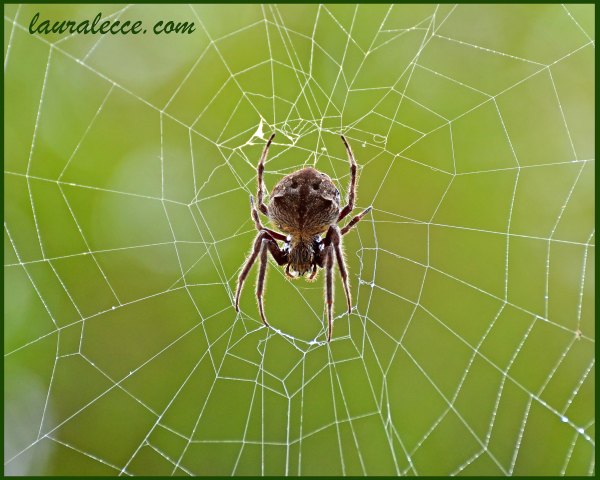
I’d like to introduce you to Debbie. She is a large, Garden Orb Weaving Spider that lives on my balcony in Australia. I rarely get a good look at her because she is a night spider that sits in the middle of her giant web from sunset until very early morning. She is hoping to catch some large insects for dinner such as flies, beetles and occasionally a cicada. Some nights if she hasn’t had much luck catching bugs, she stays out a little longer in the morning, which is when I got to take this great photo of her. I even fed her a large blow fly that had flown into my kitchen after I stunned it with the fly squatter. For a hefty spider, she certainly ran faster than I expected towards the fly I stuck to her web. She immediately wrapped it up, took it to the center of the web and ate him – she must have been hungry! During the day when she is not in the web, she is contently tucked away into her sleeping hole in one of the bricks of my balcony. She will sadly only live a year, as they generally die out in late Autumn to early Winter. Before that happens, she will try to find a mate and lay eggs in late Summer to Autumn encased in a silky cocoon. Unlike some other spiders, males and females are similar in size. The babies will hatch not long after and catch the breeze with their little silk balloon to relocate to a new home. Hopefully there will be many more little Debbies to share my home with and admire.











